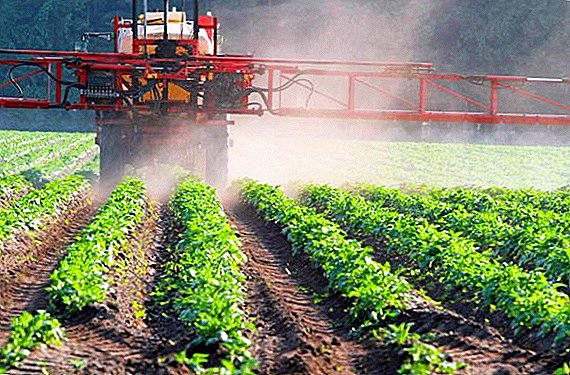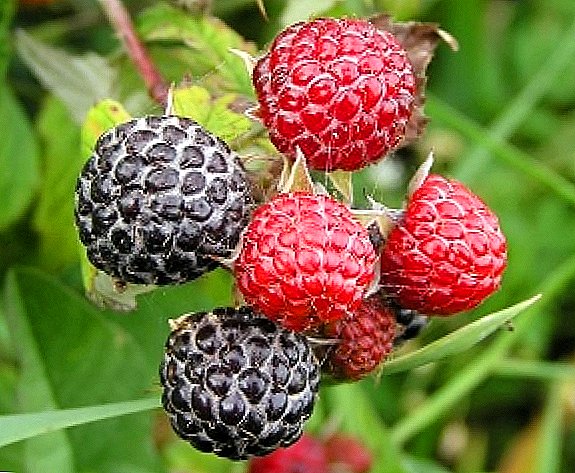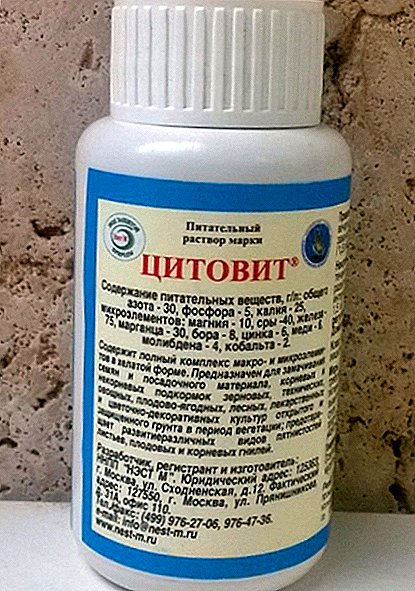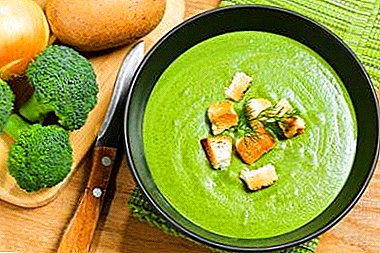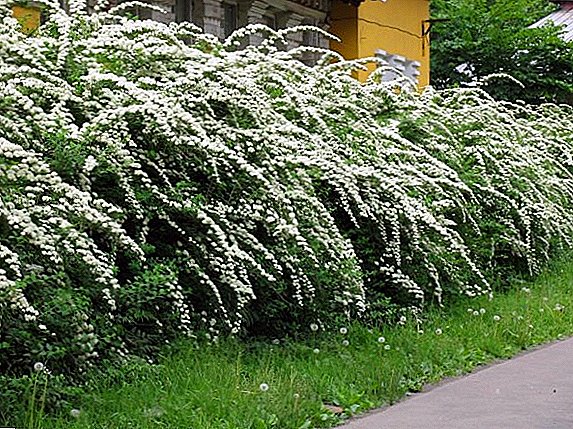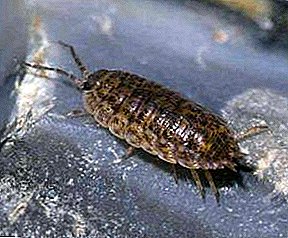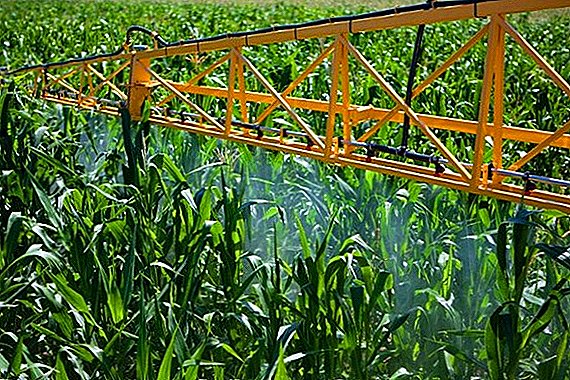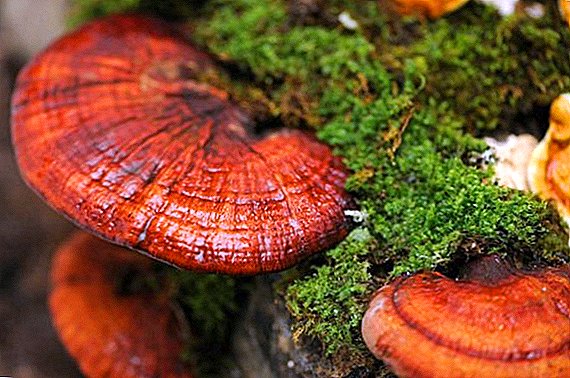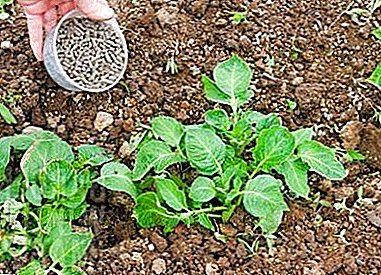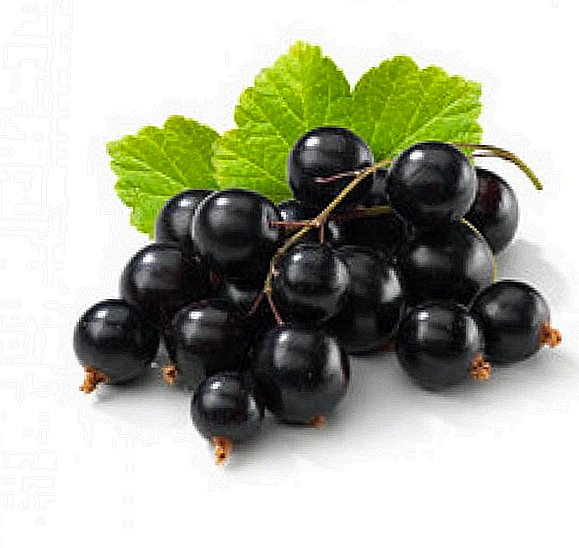 The smell of a currant bush cannot be confused with anything else. Once you feel it in your life, you will remember it forever. Berries, leaves, twigs - everything is saturated with this scent. Therefore, in Russia, this berry has long been nicknamed "currant" (in Old Church Slavonic, "strong smell"). In addition to the smell, it is famous for its special unique qualities. Let's try to figure out what black currant is, what is the use of it.
The smell of a currant bush cannot be confused with anything else. Once you feel it in your life, you will remember it forever. Berries, leaves, twigs - everything is saturated with this scent. Therefore, in Russia, this berry has long been nicknamed "currant" (in Old Church Slavonic, "strong smell"). In addition to the smell, it is famous for its special unique qualities. Let's try to figure out what black currant is, what is the use of it.
Did you know? Currant its scientific name "Ribes" is obliged to the Arabs. The latter actively used rhubarb in their kitchen - in Arabic ribas. After the conquest of Spain, the Arabs did not find rhubarb here and replaced it with sweet and sour currants, which continued to be called ribas.
Calorie and chemical composition
Berries of black currant are low-calorie. In 100, there are only from 36 to 43 kcal.  It rightfully occupies a leading place in terms of content:
It rightfully occupies a leading place in terms of content:
- vitamins (C, B groups (1, 2, 6, 9), E, PP, K, niacin, beta carotene, biotin, D, etc.);
- carotenoids;
- pectins;
- essential oils;
- tannins;
- macro- and microelements (potassium, manganese, phosphorus, boron, sulfur, sodium, iron, zinc, copper, silver);
- anthocyanins, phytoncides, glycosides.
Important! In unripe currant berries, vitamin C is four times more than in overripe.
What is useful black currant
Having a bright taste and aroma, currant has a more important feature. This plant is very helpful.
And this applies not only to the berries (although the lion’s share of everything useful is contained in them). Vitamins and other nutrients in black currants are in the kidneys, and in the leaves, and in the shoots.
Berries such as strawberries, blueberries, yoshta, dogwood, prince, cloudberries, cherries, blueberries and blackberries also have useful qualities.
Berries
These berries are unique not only by their chemical composition, nutritional value or taste.  Fruits practically do not lose their beneficial properties during heat treatment and keep them frozen, dried, ground with sugar and other forms. Regular use of currants:
Fruits practically do not lose their beneficial properties during heat treatment and keep them frozen, dried, ground with sugar and other forms. Regular use of currants:
- dilates blood vessels;
- tones up;
- eliminates the blood from the "bad" cholesterol;
- improves metabolism;
- normalizes pressure;
- has anti-inflammatory effect;
- has a diuretic effect;
- lowers the level of sugar (indicated for use by patients with diabetes);
- rejuvenates and slows the aging process;
- improves brain function;
- has antioxidant properties;
- improves eyesight;
- increases potency, etc.
Leaves
Currant leaves in no way inferior to berries in the composition of vitamins and minerals. Currant leaf tea:
- removes inflammatory processes;
- removes toxins;
- helps to get rid of excess uric and purine acid;
- has a mild laxative effect;
- helps with rheumatic pains.
Did you know? Currant leaves and berries give a special piquancy to the taste of meat and fish dishes.
Special instructions and recommendations
However, unlimited consumption of black currant can have the opposite effect. It is especially important to be careful when it comes to the health of an unborn baby or an infant, a person with chronic diseases. 
During pregnancy
Black currant during pregnancy very good for the body, but can sometimes produce a diametrically opposite effect.
Positive effect is that this plant assists a pregnant woman in preparing the body for stress - childbirth:
- enriches the body with all necessary (vitamins, minerals);
- strengthens the immune system;
- normalizes pressure;
- removes puffiness;
- protects against anemia;
- with a tendency to allergies can cause exacerbation. The use of pure 100% currant juice during pregnancy must be abandoned;
- increased varicose veins in the legs. The presence of symptoms of this disease warns about the undesirability of eating berries;
- an attack of gastritis (if the acidity is increased);
- the likelihood of increased levels of phytoestrogens.
 You can pre-eat some berries and watch the reaction of the body. Blackcurrant juice need to drink only diluted.
You can pre-eat some berries and watch the reaction of the body. Blackcurrant juice need to drink only diluted.With diabetes
Black currant is among the recommended products for patients with type 1 and 2 diabetes (it contains a lot of useful pectin and fructose).
In addition to berries, doctors recommend the use of decoctions of leaves and twigs (improve the condition of the gastrointestinal tract, contribute to a better metabolism).
In diabetes, it is useful to include cornel, Chinese cabbage, blueberry, red currant, spinach, acacia honey, blueberries in the diet.Black currant diabetes is especially helpful in the form of infusions (from fresh and dry berries, leaves). To prepare them is very simple - pour boiling water over the leaves and hold out for half an hour. Drink infusions should be more often - 6-7 times a day for half a cup.

For children
Tasty berry is intended to her children ate: many vitamins and minerals, healing and healing properties.
Some advise starting to give the child fresh currants from 6-7 months of age. But, given that up to a year, the baby’s body is gradually being rebuilt from dairy food to solid food, experiments with currants are better. delay a little.
You need to start with ground berries, currant fruit drinks. It is better to dilute the currant juice with boiled water (1x1). Black currant like a child in baking.
Currants can sometimes cause allergic reactions. It is advisable to acquaint the child with her gradually: Give a little currant in the morning and see if it will cause the child to have redness on the body, rash or itching. When such reactions occur, it is worth refraining from currants for several years. 
Use in traditional medicine
Popular wisdom has long noticed the healing properties of this berry. With its help, they cured scrofula in children, colds, eye diseases, dermatitis, etc.
Most often with the help of currants cough, temperature, sore throat, etc. were treated. Not only berries, but also leaves with sprigs were healed. The most popular prescription drugs black currant:
- currant tea (its benefit lies in its tonic effect, anti-inflammatory, diuretic and diaphoretic effect). It is used for vitamin deficiency, colds, anemia). Brew separately 14-20 washed and cut fresh leaves and a teaspoon of black tea. Insist 10-15 minutes. When consumed, mix 1/4 of black tea, 2/4 of black currant infusion, 1/4 of hot milk with honey (to taste).
Important! A more effective tea is obtained by brewing young currant leaves of light green color.
- currant infusions. They relieve inflammation, temperature, normalize blood pressure, strengthen blood vessels, etc. Insist dry berries (1 tablespoon of raw materials per glass of water. Pour boiling water over berries, muffle and leave for two hours. Drink three times a day); leaves (6 tbsp. freshly cut leaves pour boiling water with a liter, leave for an hour in heat. Drink more often, take half a cup);
- decoctions. Drink them from arrhythmias, to normalize pressure, with manifestations of scurvy. Prepare from dry berries (2 tablespoons lb. of raw materials boil in 250 ml of water and cook for 10 minutes. Insist in heat for 30 minutes. Drink four times a day in a tablespoon). For lotions and therapeutic baths, decoctions are made from leaves, stems, and buds (mixed in equal proportions (50 g per liter of water), boil and boil for 10 minutes, leave for an hour);
- currant juice. They drink it clean or diluted with water (in this form it is used to treat a sore throat (rinse). If acidity is lowered, triple intake of glasses of pure juice a day helps;
- berries The berries, squeezed with honey, help perfectly for hypertension and cough.

Did you know? Currants grows on all continents (except Antarctica). Scientists have counted more than 150 wild species only.
Application in cosmetology: for beauty and skin health
Black currant is widely used in cosmetology. It is part of many creams, lotions, soaps and other cosmetic products.
Natural acids make this plant a natural peeling for the skin - dead cells are eliminated, regeneration is accelerated.
With the help of currant juice get rid of freckles and age spots, it reduces the porosity of the skin.  Based on currant make and apply:
Based on currant make and apply:
- cosmetic masks. They tone and nourish the skin of the face. It is easy to prepare: 4-5 young currant leaves in a mortar. Add to the mass of 1 tsp. honey and sour cream, mix. Apply for 15 minutes before bedtime. Rinse with warm water. Application course - 2 weeks. Crushed ripe berries are also used, they reduce wrinkles, rejuvenate the skin (berries should be transferred with honey (1x1) and applied to skin for 3-4 minutes. Wash off with cool water).
In the summer, when there are many currants, you can simply squeeze out the juice of several berries and refresh their face skin. For aging skin, a mixture of kefir and ground in a meat grinder (in a blender) ripe currants will be useful;
- tonic ice. Freeze pure or diluted blackcurrant juice in ice tins. Currant cubes are well suited for toning massage;
- masks from juice and decoctions from leaves for hair. Procedures help to restore the hair structure, give a healthy shine;
- tool to strengthen the nail plate. Regular rubbing of currant juice in the nail and cuticle allows them to heal and strengthen.
In cosmetology such plants are often used: dogwood, bird cherry, evening primrose, ginger, radish, mountain ash red, amaranth, apricot and watermelon.
Preparation for the winter
Currant - one of the few plants that is able to maintain most of its qualities after freezing, drying, boiling jam, etc.  Therefore, it is harvested for the winter and early spring, when it is especially felt the lack of vitamins. Harvest berries, leaves, buds and twigs different ways:
Therefore, it is harvested for the winter and early spring, when it is especially felt the lack of vitamins. Harvest berries, leaves, buds and twigs different ways:
- freezing. Frozen currants best preserve the entire range of vitamins and minerals - this is its main benefit. Before freezing pick berries (dry, not overripe, not damaged). Some gardeners do not wash the berries, but blow them with air. If you wash, you should do this carefully (so as not to damage the peel), and after that you must dry it. Berries spread in one layer on a flat pan and freeze. Then they can be put into bags and placed in a freezer for storage (not more than a year - until a new crop);
- drying. Berries should be dried in the shade, you can initially dried in the oven. So do the leaves and shoots. The best time for harvesting leaves is June-early July. Leaves should not be very large, but not small, to maintain integrity. It is better to store ready raw materials in glass containers;
- grind berries with sugar (1x1). This currant is well preserved (candied).
Important! When drying berries or leaves in the oven, you should ensure that the temperature does not exceed 50 °. Otherwise, vitamin C will suffer.
- Gourmets can recommend two recipes - five-minute jam (vitamins are not destroyed when cooking) and jam from berries:
- bust and wash kilogram of currants, let the water drain. Prepare a syrup (1.5 kg of sugar for 2 glasses of water) in a deep stainless steel saucepan. When boiling, lay the berries, boil and cook for five minutes, removing the foam. For storage use sterilized dishes;
- 750 g of berries (liter pot) wash and leave in a colander. Boil water in a wide saucepan and blanch the berries for 5 minutes. Then grind them through a sieve into mashed potatoes. Add to mass 1.4 kg of sugar, shift to the pan and boil (stirring occasionally). Over low heat bring to the desired condition - to the desired thickness. Stir all the time. Close in sterilized jars.
It will be interesting to you to get acquainted with the recipes for preparing other berries for the winter: gooseberry, cherry, cornel, yoshta, chokeberry.
Contraindications
Berries and leaves of black currant - this is not only good, but also possible harm.  Among the main contraindications to the use of this plant, its main intolerance is intolerance. Currants can do harm also when:
Among the main contraindications to the use of this plant, its main intolerance is intolerance. Currants can do harm also when:
- thrombophlebitis;
- high acidity;
- hepatitis;
- suffered strokes and heart attacks.


